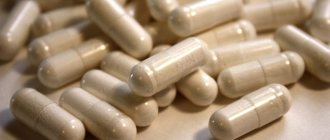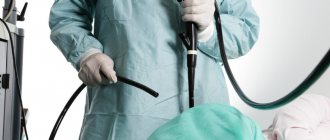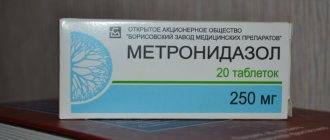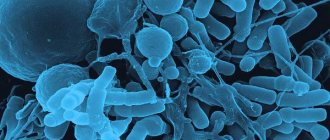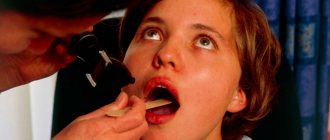In the treatment of many diseases, each of them took antibiotics at least once in their lives. They help quickly get rid of a bacterial infection and prevent complications from developing.
However, treatment with antibiotics has a significant drawback - the suppression of beneficial microflora, the destruction of bacteria important for the human body. We think you have noticed that when taking antibiotics, the general condition of the digestive tract is disrupted and dysbiosis develops. It is for the treatment and prevention of this disease that it is important to take probiotics with antibiotics. These living organisms are able to restore the required amount of beneficial bacteria, strengthen the immune system and restore the functioning of the gastrointestinal tract. You will learn about which probiotics are best to take with antibiotics from our material.
First, we will find out why probiotics are needed when taking antibiotics, and what beneficial properties this medicine has.
As mentioned above, antibiotics destroy beneficial intestinal microflora. There are also allergies to antibiotics. This causes the proliferation of pathogenic bacteria that cause life-threatening diseases. Therefore, it is important to take probiotics and antibiotics at the same time; in some cases, doctors prescribe probiotics after taking antibiotics to completely prevent or reduce the effects of taking gut-damaging medications.
The main task of probiotics is to restore the natural intestinal microflora. Drinking probiotics after antibiotics is useful, as they create a pH level that is optimal for the proliferation of beneficial bacteria and produce enzymes, vitamins, and hormones. Probiotics for the intestines after antibiotics are needed to remove toxins, maintain water-salt metabolism, protect the intestinal mucosa, as well as for better absorption of vitamins, microelements, and stimulate peristalsis.
Probiotics when taking antibiotics
The main question is which probiotics to choose when taking antibiotics?
Not all drugs are equally effective, which is why there are many strains for different situations.
When treating with antibiotics, the greatest effectiveness was shown by the combined use of the fungus Saccharomyces Boulardii Saccharomyces boulardii and lactobacilli Lactobacillus rhamnosus GG.
I'll explain why. Saccharomycetes are the most effective probiotics against acute diarrhea in children and adults. They do not take root in the intestinal tract , but are completely eliminated after a few days! During this time, they do a great job and displace pathogenic flora, which settles at the site where beneficial bacteria are destroyed.
Saccharomycetes also strengthen the epithelium of the intestinal walls (leaky gut syndrome) and prepare the ground for the establishment of beneficial microflora, which we populate with lactobacilli.
Negative consequences of antibacterial therapy and ways to eliminate them
Of course, the most significant result after a course of antibiotics will be the complete recovery of the child. However, in most cases, such treatment brings not only benefits - the following deviations can become a “fly in the ointment”:
- dysbacteriosis,
- bowel dysfunction,
- inadequate immune responses,
- hypovitaminosis,
- general exhaustion of the body.
How to reduce the likelihood of such problems and deal with their occurrence as quickly as possible? Let's look at the most common recommendations from pediatricians that will help maintain your child's health during antibiotic therapy.
How to restore a child's digestion?
The action of antibiotics is aimed primarily at eliminating pathogenic bacteria that have entered the body during illness. However, the problem is aggravated by the fact that drugs in most cases do not distinguish between pathogenic and beneficial microorganisms, and normal microflora gets caught in the “crossfire”. The child’s gastrointestinal tract suffers the most from this: microorganisms that populate the intestines participate in metabolic processes, helping food to be properly absorbed, and regulating the breakdown and absorption of nutrients. Therefore, after taking antibiotics, you may experience a decrease in appetite, upset stool, increased salivation and frequent attacks of nausea for no apparent reason.
To prevent the appearance of dysbiosis or at least alleviate its course, restorative agents should be used from the first day of taking antibiotics. If the baby is still breastfed, it is worth putting it to the breast as often as possible - mother's milk contains all the bacteria necessary for normal digestion, therefore it is the best way to eliminate dysbiosis. For older children, the doctor may prescribe probiotics - preparations with a high content of beneficial bifidobacteria and lactobacilli. In addition, the patient’s daily diet should be enriched with lactic acid products - live yoghurts, natural kefir and cottage cheese, which help restore the normal environment of the gastrointestinal tract.
Prevention of allergic reactions to antibiotics
Even children who are not prone to allergies may develop hypersensitivity symptoms during antibiotic therapy. The fact is that if there is a metabolic disorder, the protein compounds contained in the daily menu are not broken down enough, entering the blood in an atypical form. The body perceives them as foreign, so it begins to attack, as a result of which the child may develop signs of an allergy - rash, itchy skin, irritation, etc.
Usually, unpleasant symptoms do not require special treatment and go away on their own after the microflora is restored. But if skin itching causes discomfort to the child, it is worth considering additional prescription of antihistamines (pediatricians often recommend taking them together with antibiotics).
Atypical consequences of dysbiosis
If microflora disruption cannot be prevented, the child may experience completely different symptoms, including those not at first glance related to the digestive tract. Thus, after antibiotic therapy, girls sometimes develop specific vaginal discharge characteristic of thrush. You should not be afraid of them - if you maintain careful hygiene, everything usually goes away within a week. However, if the discharge is too intense, accompanied by itching or does not go away for a long time, you should show the child to a pediatric gynecologist - he will prescribe age-appropriate restorative medications.
Another unpleasant symptom of dysbacteriosis is stomatitis - painful ulcers on the oral mucosa. They occur against the background of fungal candidiasis and are accompanied by the appearance of a white coating on the tongue and gums. To restore the microflora in this case, a course of antifungal drugs and antiseptic rinses may be required to kill the fungus in the mouth.
A gentle diet during a course of antibiotics
Since metabolic processes are disrupted during antibacterial treatment, the child’s diet should be reconsidered, focusing on lighter and healthier foods. Any fast food, fatty, fried, smoked, salty and sweet dishes are prohibited. It is better to replace them with the following products:
- oatmeal, buckwheat, rice or corn porridge;
- lean meat (chicken, turkey, veal, rabbit), boiled or steamed;
- stewed low-fat fish;
- fresh vegetables, fruits, berries;
- dairy products;
- drink plenty of fluids - fruit drinks, natural juices, mineral water, herbal teas, compotes.
It is better to consume cereals and drinks without sugar, but if the child categorically protests, you can sweeten the dishes with honey (of course, in the absence of allergies) - this product is much healthier and, moreover, easier to digest.
Vitamin therapy
Antibiotics undermine not only digestion, but also the child’s immune system. To restore the body by teaching it to cope with infections on its own, you will need at least a month's course of vitamins A, C, E, D and group B, as well as iron, calcium and selenium. It is ideal if the selected multivitamins include lecithin - this substance helps the body absorb nutrients and, moreover, stimulates the production of red blood cells.
Where to look for Saccharomyces Boulardii
There is one option on iHerb, Jarrow Formulas, Saccharomyces Boulardii, they already have a prebiotic.
The second necessary probiotic is the lactobacilli Lactobacillus rhamnosus GG, we find them here Culturelle with inulin.
I like the capsules, there are chewable tablets for children, and probiotic drops for very little ones.
The second “spare” option, instead of LGG, take the acidophilic bacteria Lactobacillus acidophilus, they are part of Pro-Biotic Acidophilus and acidophilic pearls Probiotic Pearls.
Rules for taking medications
Antibiotics should only be taken as prescribed by a doctor. It happens that patients take antibiotics on an outpatient basis without prior consultation, since a certain drug has already helped them cope with the disease. But even an experienced doctor without laboratory diagnostics will not be able to accurately determine the causative agent of the disease. In addition, with a weakened immune system, one infection can displace another, and taking antibiotics that helped before will not be advisable.
If you choose the tablet form, you must take the medications strictly according to the regimen prescribed by your doctor. Drink only water. If antibiotics are prescribed in injection form, a medical professional must administer the injections, observing aseptic conditions.
Probiotics for Travel
Saccharomyces fungi are also useful when traveling. If you are going on a trip, also take with you the yeast fungi Saccharomyces boulardii and/or Bifidobacterium longum.
Saccharomycetes boulardii are the most effective probiotics against acute diarrhea in adults and children caused by antibiotics or pathogenic organisms during travel (salmonella, staphylococcus, E. coli).
Studies have shown that taking 500 mg (10 billion) of S. boulardii per day significantly reduces the risk of traveler's diarrhea, and also reduces the consequences if the infection does occur.
Where to find it: for travel I like this option Jarrow Formulas, Saccharomyces Boulardii + MOS
Additional Prevention Tips
In addition to supportive drug therapy, adherence to a diet and the use of traditional recipes, attention should be paid to additional factors that help prevent dysbiosis.
Antibiotic: treatment without consequences
In order for an antibacterial drug to not only cope with the infection, but also cause minimal harm to the body, it is advisable to take a responsible approach to its selection and use. You can prevent the development of dysbiosis if:
- Strictly adhere to appointments. If a therapist has prescribed a certain drug, you cannot replace it with a cheaper one yourself. Generics are often more toxic, and their side effects are fraught with dangerous complications. When financial problems do not allow you to purchase the prescribed drug, you should consult with your doctor about an analogue: the specialist himself will recommend a suitable one, as well as cheaper tablets for dysbiosis after antibiotics.
- Do not interrupt the course of treatment. Very often, the patient, feeling relief, stops taking the antibiotic. In fact, the danger of such behavior is much higher than the hypothetical harm of the drug, since the pathogen does not die, but mutates. As a result, immunity to this antibiotic develops, the infection becomes chronic and cannot be treated.
- Do a laboratory test to identify a specific pathogen if the disease does not go away. This allows you to use a specialized antibiotic and recover faster. However, government agencies often refuse to do this analysis, citing workload or lack of equipment. In this case, you should be persistent or contact a private laboratory.
In addition, it is strictly forbidden to self-medicate. Without medical education, it is impossible to choose the right drug and its dosage.
Even if last time a certain antibiotic helped you with similar symptoms, this time it may not only be useless, but also harm. In addition, some groups of these drugs are especially dangerous for the intestinal microflora (for example, tetracyclines and aminoglycosides).
General recommendations
The most reliable prevention of any disease is a healthy lifestyle. As a rule, dysbiosis occurs if the body is already weakened: normally, the intestinal microflora is quite resistant to antibiotics without additional support. To strengthen the immune system and prevent the development of side effects of antibiotic therapy, you should give up bad habits, systematically exercise and constantly adhere to the rules of a healthy diet.
Look what the famous E. Komarovsky says about dysbiosis, this is important:
Bifidobacterium longum BB536
Second travel probiotic, registered Bifidobacterium longum strain BB536 . It is the most popular probiotic in Japan, where it is used in supplements and yogurt.
It supports healthy intestinal microflora in children and adults, improves the quality of life in polluted cities and helps adapt to unfamiliar foods .
The strain has over 50 clinical trials and also provides benefits for:
– reduces the incidence of influenza in older people over 65
- reduces the manifestations of seasonal allergies and the number of eosinophils in the blood, when taken a month before the start of the season
– reduces cholesterol levels (effect after 9 weeks of use)
- strengthens bones in osteoporosis along with the intake of calcined milk (the probiotic improves intestinal health, which leads to a decrease in pH levels and improved calcium absorption), see diagram:
Where to find: Bifidobacterium longum BB536 in Natural Factors probiotic, TravelBiotic
To summarize, probiotics should be taken from the first day , and the fungi Saccharomycetes must be included in the regimen.
I also wrote about probiotics for immunity here, and here is how to choose the best probiotics for the desired task
By using code IFO971 with every order, you help me support the blog and write reviews of my purchases. The code is entered manually during registration. I am grateful for using it!
Want more information about probiotics and new strains? Let me know in the comments =)
How to reduce the effect of antibiotics on intestinal microflora?
Irrational, unjustified use of antibiotics negatively affects the patient’s health and leads to the emergence of microorganisms that are resistant to modern drugs.
We recommend reading:
How is rotavirus intestinal infection manifested and treated?
Remember:
- Antibacterial agents should only be prescribed by a doctor. Sometimes patients purchase and start taking antibiotics on the recommendations of relatives, friends, and pharmacists.
- The doctor selects the drug, its dose, and course duration in accordance with clinical recommendations for the treatment of a particular disease.
- Do not interrupt treatment yourself. Often, patients, having felt improvement, stop taking the drug on their own initiative. This leads to relapse of the disease and re-prescription of the antibiotic.
- If there is a high risk of dysbacteriosis, carry out prevention with the help of prebiotics, probiotics, synbiotics, and follow a diet.
- If, during treatment with antimicrobial agents, stool changes or abdominal pain occurs, tell your doctor. He will decide to replace the drug or prescribe a probiotic.
If, after stopping the antibiotic, dyspeptic disorders persist for a month, consult a gastroenterologist. The doctor will conduct an examination, determine the nature of the microflora disorder and prescribe treatment.
In continuation of the topic, be sure to read:
- How to restore intestinal microflora after antibiotics?
- Probiotics and prebiotics: definition and list of drugs
- What are probiotics, names of drugs and their types
- What are synbiotics, their benefits and list of drugs
- Symbiotics: concept, list of drugs and products
- Bifidobacteria and lactobacilli in one preparation
- Intestinal bacteria in preparations: list of medications and their use
- Bifidobacteria: concept, functions and sources of beneficial microorganisms
- Methods for restoring intestinal microflora: drugs and nutrition
- Bifidobacteria and lactobacilli: their differences, list of drugs and food sources
The effectiveness of drug treatment of dysbiosis
Pharmacology has many drugs to get rid of dysbiosis. The gastroenterologist is obliged to identify the causes of disruptions in the microflora. The therapeutic effect is achieved through:
- probiotic substances;
- prebiotic compounds;
- classical antibiotics;
- bacteriophages and various antispasmodics;
- antihistamines.
Complex use of the drug is carried out on a personal basis. Depends on the extent of the disease and symptoms.
Self-medication at home is prohibited; it can cause additional complications and disorders. Pinpoint diagnosis will allow you to select the optimal treatment regimen.
Staphylococci are destroyed by Streptomycin, and enterococci by nitrofuran substances. Antifungal medications are necessary for candida.
What to take antibiotics against dysbacteriosis with? “Lactobacterin” is a probiotic, belongs to the first generation, it is created on the basis of only one component, which is live lactobacilli. After penetration into the intestines, it produces lactic acid, which creates favorable conditions for the appearance of beneficial organisms.
The drug is produced in the form of a powder, which is hermetically packaged in bottles. Each pack contains ten such vessels. You can treat with the drug for no more than ten days. It is resistant to antibiotics, and therefore its simultaneous use with antibacterial drugs is allowed.
Indications for use are intestinal infections along with dysbiosis, diarrhea and impaired bowel function. Contraindications, according to the instructions, include vulvovaginitis.
What else do you take with antibiotics for dysbiosis?
"Bifiform"
This drug with antibiotics is taken by adults for dysbiosis, as it helps quite well.
The medicine contains enterococci along with strains of bifidobacteria. The active components normalize the functioning of the digestive system, thanks to which the probiotic in question is used to treat dysbiosis in patients. The product can also effectively combat constipation and diarrhea. The medication, among other things, strengthens the immune system and serves as a prevention of infectious pathologies.
Side effects of Amoxiclav
and some others.
In clinical practice, there are no known cases of overdose leading to death. When taking the drug in doses significantly higher than prescribed, the following may occur:
- abdominal pain,
- diarrhea,
- vomit,
- excitation,
- anxiety,
- insomnia,
- dizziness.
Treatment for an overdose of Amoxiclav is symptomatic; taking activated charcoal and gastric lavage are indicated.
The antibiotic contains 2 active components: amoxicillin and clavulanic acid. Tablets are available in dosages: 250 mg 125 mg; 625, 1000 mg.
A semi-synthetic drug from the penicillin group acts as a peptidoglycan inhibitor, destroying pathogen cells. Amoxicillin inhibits the action of beta-lactamase. Clavulanic acid prevents the destruction of the drug without having a clinical effect on the patient's body.
The drug quickly penetrates from the gastrointestinal tract, absorption is maximum if the medicine is taken at the beginning of a meal. The highest concentration in the blood appears 60 minutes after administration and is 12 mcg/ml.
The medication is removed from the body by the kidneys. In patients with impaired liver function, the half-life is 7.5 hours. The drug is also eliminated by hemodialysis.
The medication is effective for diseases such as sinusitis, tonsillitis. pharyngitis, bronchitis, pneumonia, treats infections in gynecology, diseases of bones and blood vessels.
The following pathological processes are contraindications to the use of the drug:
- allergy to antibiotics;
- jaundice;
- liver dysfunction;
- Infectious mononucleosis;
- lymphocytic leukemia;
- gastrointestinal diseases;
- chronic renal failure;
- pregnancy;
- simultaneous use with an anticoagulant.
Amoxiclav helps in the treatment of sinusitis and tonsillitis. pharyngitis, bronchitis.
The medicine is prescribed for oral administration in varying dosages depending on the severity of the infectious process.
The medication has the following side effects:
- loss of appetite;
- nausea;
- vomiting;
- the appearance of itching and urticaria;
- leukopenia, dizziness;
- headache.
Recovery after antibiotics
If antibiotics have already led to the development of dysbiosis and weakened immunity, the use of the following methods and drugs is recommended:
- Creon , Mezim - enzymes to improve digestion;
- Essentiale , Karsil - to improve absorption function;
- Loperamide , Trimebutin - to restore microflora;
- Smecta , Enterosgel - for removing toxins and pathogenic microflora from the body;
- Vitamin complexes for general strengthening of the body.
In case of severe diarrhea and exhaustion, you should urgently seek help from a gastroenterologist to prevent the development of severe gastrointestinal diseases.
Release form
Amoxiclav is mainly available in tablet form. There are two varieties of this form. The main one is film-coated tablets intended for swallowing and dissolving in the intestines. There are also instant tablets that dissolve in the mouth. You can also purchase the drug in the form of a suspension (powder that requires dilution), and in bottles containing powder, from which you can prepare a solution for intravenous administration. Amoxiclav tablets can have the following dosage:
- 250 mg 125 mg,
- 500 mg 125 mg,
- 875 mg 125 mg.
The first number indicates the dosage of amixicillin, and the second - clavulanic acid. The drug is produced by a Slovenian pharmaceutical company.
The powder for preparing Amoxiclav solution for intravenous administration may contain 500/1000 mg of amoxicillin (100/200 mg of clavulanic acid, respectively). Powder dosage options for preparing Amoxiclav suspension are 125, 250 and 400 mg (amoxicillin). The medicine in the form of a suspension is recommended for the treatment of children under 12 years of age, although its use by adults is not excluded. Also available are instant tablets Amoxiclav Quiktab 875 mg 125 mg.
Prebiotics to restore the stomach and intestines
To reduce the risk of side effects from the digestive tract, antibiotic treatment must be combined with bifid medications. They differ not only in dosage form and cost, but also in active ingredients, so it is better to choose the appropriate drug with your doctor. The most effective and frequently prescribed drugs in this group are listed in the table below.
Table. Prebiotics for stomach restoration.
| Drug name | What bacteria are included | How to use |
| "Yogulact" | Lyophilisate of live bifidobacteria | 1-2 capsules 3 times a day with meals or before meals. Duration of treatment is 1-2 months. |
| "Biovestin" | Bifidobacterium adolescentis | 12 ml per day 30 minutes before meals, first diluted with cold water or milk. Duration of treatment – 4 weeks (in individual cases – up to 3 months). |
| "Lakto-filtrum" | Lactulose. Hydrolytic lignin | 2-3 tablets 3 times a day an hour before meals (pre-grind). The duration of treatment should not exceed 3 weeks. |
| "Rioflora" | Live lyophilized bifidobacteria. Inulin. Fructooligosaccharides | 2 capsules 2 times a day on an empty stomach for two weeks. |
| "Normobakt" | Live bifidobacteria | 1 sachet 1-2 times a day for 10 days. |
Sasha "Normobakt"
Note! Some prebiotics contain lactose (mostly in monohydrate form). This must be taken into account when prescribing, since such drugs cannot be given to persons with lactose intolerance and lactase deficiency.
Probiotics and prebiotics in the gut
Medicine "Bifidumbacterin"
This is a bright representative of the first generation of probiotics. It is a single-component drug available in the form of tablets, powder, drops and suppositories. The product improves metabolic processes, increases immunity and normalizes intestinal function.
The active component of the drug is bifidobacteria. They are effective against E. coli, yeast-like fungi and staphylococcus. The course of therapy should not exceed fourteen days. Only a doctor can extend the treatment period.
Indications for use are as follows: dysbiosis, intestinal infection and colic. Contraindications include individual intolerance and allergy to the probiotic in question.

